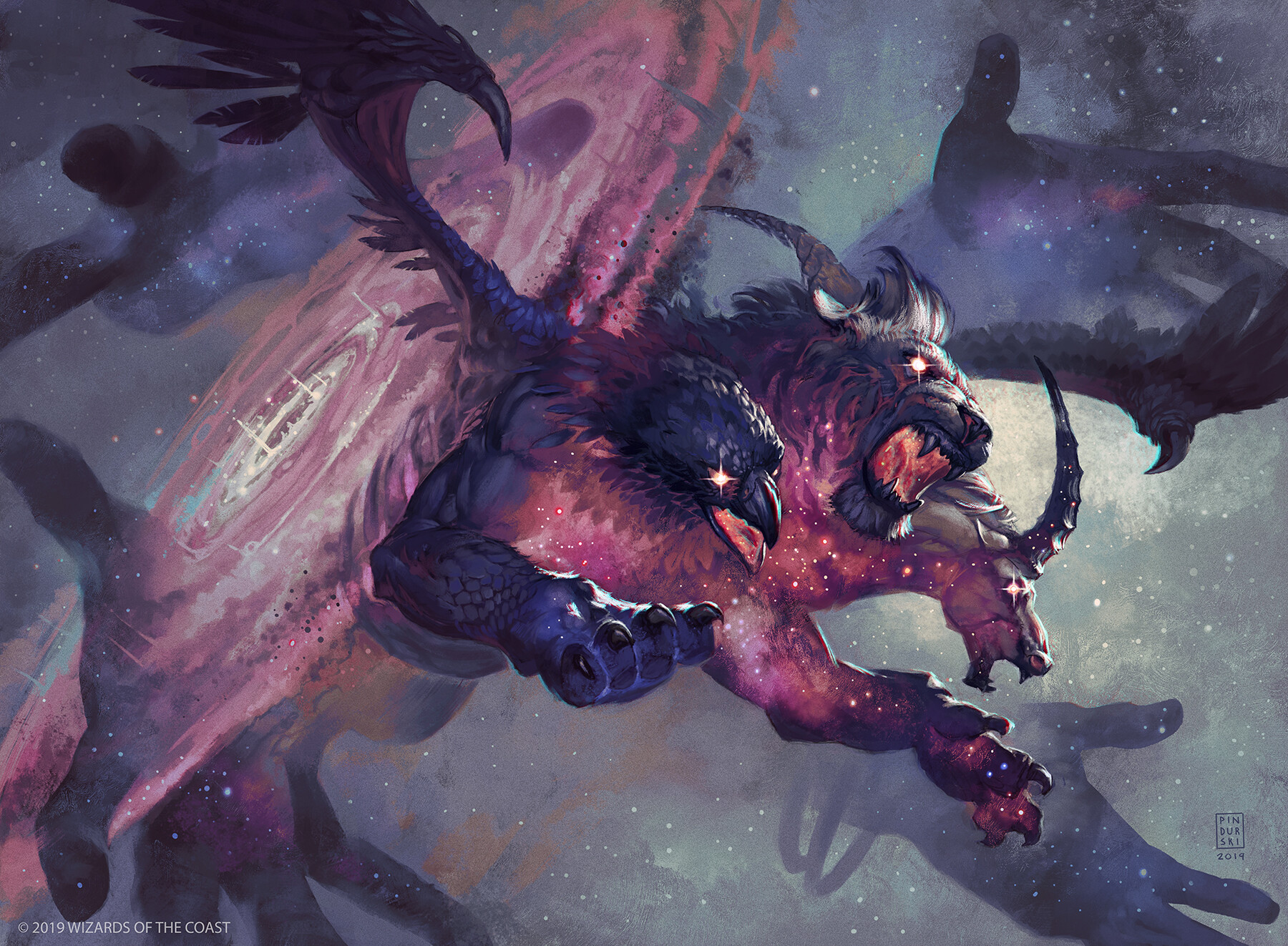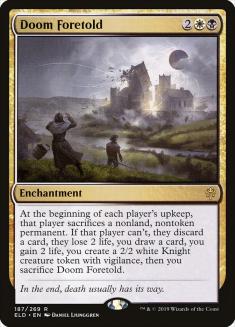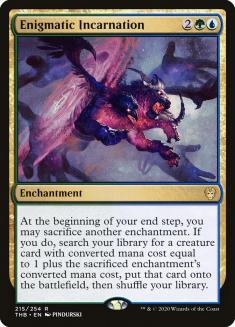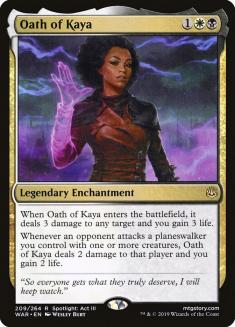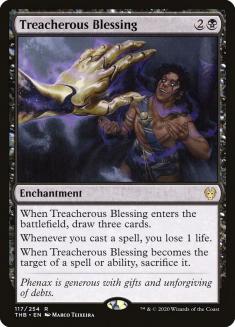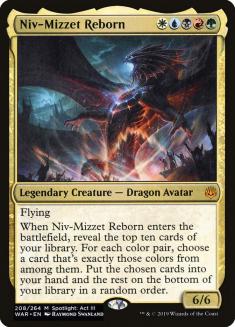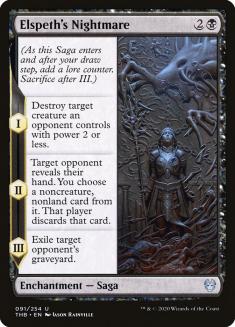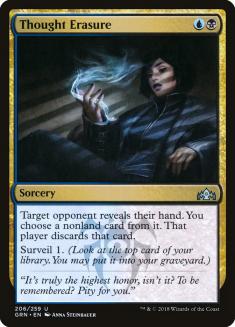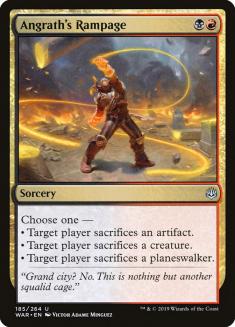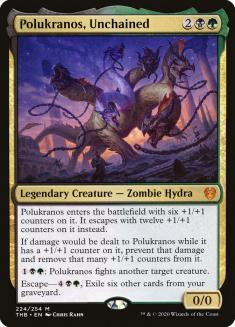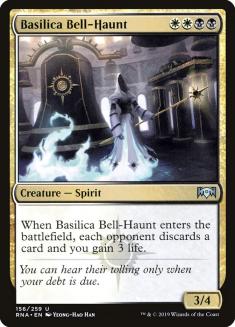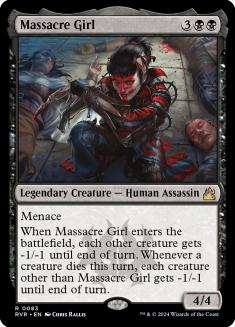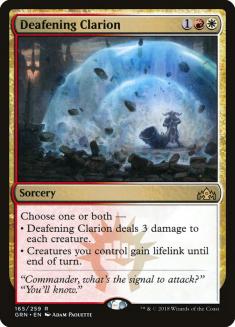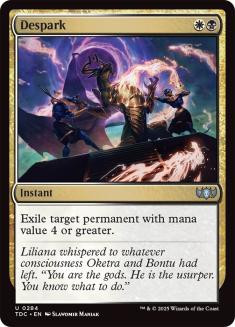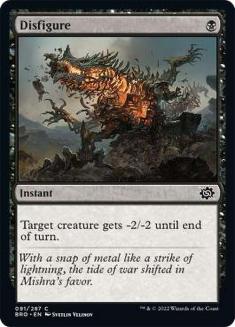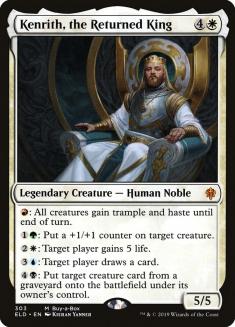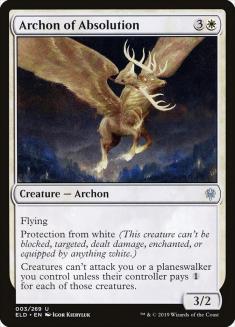If you followed Players Tour Brussels last week, you might have noticed that I mentioned I didn’t practice much Pioneer, because I was focusing on Standard testing for the World Championship. The World Championship is worth a lot, and allocating as much time as I did to it let me explore the format very deeply.
The deck I’m going to talk about today is ultimately not the deck I decided to play in the tournament, but it is a deck I spent a large amount of time on. Of all the decks I tried this was by far the most interesting, and it’s also completely different from any other deck I’ve seen in the format.
When I first started testing, my eye was drawn to the Orzhov Doom Foretold builds. I’ve tried to make Doom Foretold decks work in several different Standard formats and they always fell a bit short, but the new set seemed like it had enough potential additions that it was worth trying again. I quickly identified that the Orzhov builds were still unfortunately a bit lackluster, but the core of the deck did seem a lot stronger than previous iterations. I tabled that information for future use.
Fast forward to a different brewing session a couple of days later, and I’m trying to build decks with Enigmatic Incarnation. Enigmatic Incarnation is one of those cards that demands a lot during deckbuilding, yet its effect is absurdly strong if you’re willing to pay the price. It reminded me a bit of Fires of Invention in the sense that it could immediately pay for itself by finding a four-drop and then would let you double-spell from Turn 5 forward, so I figured I needed to at least try it given the payoff was so high.
Unfortunately, I was also unable to make Enigmatic Incarnation work to the extent that I wanted. One thing I discovered, however, was that the type of card that was good with Doom Foretold was the exact same type of card that was good with Enigmatic Incarnation – you wanted enchantments that would provide you immediate value and that you then could sacrifice, such as Oath of Kaya or Treacherous Blessing.
Once I realized the overlap, it became my mission to build a deck with these two cards. Clearly the mana was a big challenge – after all, we’re already at four different colors – but I suspected we could make it work if we added Fires of Invention. Fires of Invention is the perfect mana fixer, as it fixes all your colors for the rest of the game, and it can also be sacrificed to either Doom Foretold or Enigmatic Incarnation. In fact, a Turn 4 Fires of Invention followed by Enigmatic Incarnation lets you cheat a five-mana creature onto the battlefield if you want, and I had just the five-mana creature for the job:
Niv-Mizzet Reborn seemed to be the perfect card to tie the deck together – it’s excellent with Fires of Invention and it could grab either of Enigmatic Incarnation or Doom Foretold, as well as part of your fuel (like Oath of Kaya).
Stan Cifka and I worked on the deck for a while, and tuned the list back and forth, trying a collection of different cards that filled multiple roles in the deck (enchantment for Enigmatic Incarnation, multicolored for Niv-Mizzet Reborn, key casting cost creature as a tutor target). Eventually, the Doom Foretold proved to not be good enough, which was ironic considering it was the entire inspiration for the deck – in the end, the four-drop slot was already crowded, it was an enchantment that you actually didn’t want to sacrifice to Enigmatic Incarnation, and it was cannibalizing your Enigmatic Incarnation fodder for a smaller effect, all of which made it a bit anti-synergistic with the rest of the deck even though in theory it should fit in the same shell.
Another change we made to the deck was narrowing down the costs of the enchantments. Originally, the deck had an assortment of two-mana enchantments and three-mana creatures – you could, for example, sacrifice Omen of the Sea or Omen of the Forge to Enigmatic Incarnation and get Deputy of Detention; Uro, Titan of Nature’s Wrath; or Klothys, God of Destiny. After playing more, though, we realized that we needed to concentrate on two casting costs – it was just too hard to build your deck in a way that enabled more than that. So we cut the two-mana enchantments and the three-mana creatures, and decided to focus on the four- and five-mana creatures. This let us streamline the deck a little bit more and include better multicolored two-mana interaction that also powered up your Niv-Mizzets in the later stages of the game.
Ultimately, this is the version we settled on:
Creatures (11)
- 1 Tolsimir, Friend to Wolves
- 3 Niv-Mizzet Reborn
- 1 Wicked Wolf
- 2 Kenrith, the Returned King
- 2 Atris, Oracle of Half-Truths
- 2 Polukranos, Unchained
Lands (28)
- 1 Forest
- 1 Plains
- 1 Swamp
- 1 Mountain
- 1 Island
- 2 Overgrown Tomb
- 1 Sacred Foundry
- 1 Godless Shrine
- 2 Steam Vents
- 1 Stomping Ground
- 1 Blood Crypt
- 1 Breeding Pool
- 1 Hallowed Fountain
- 2 Temple of Deceit
- 1 Temple of Silence
- 1 Temple of Triumph
- 2 Temple of Malice
- 1 Temple of Plenty
- 1 Temple of Epiphany
- 1 Temple of Malady
- 4 Fabled Passage
Spells (21)

Elspeth’s Nightmare might raise some eyebrows, but I liked it a lot in Orzhov Doom Foretold and I think it has a home here as well. You sometimes don’t get double value out of it, but even against control decks it’s reasonable to just get it on the battlefield on Turn 3, get a Duress out of it, and then sacrifice it to Enigmatic Incarnation. If you ever snipe both a creature and something like an Embercleave or a Nissa, Who Shakes the World from their hand, then the card is fantastic, but that’s just a bonus and you’re happy getting either half most of the time.
The manabase is, as with most Niv-Mizzet Reborn decks, very tricky to get right. If you read my PT Brussels article, you will remember that I said the top priority was having access to all five colors of mana once you hit five lands – in this deck, this is not the case. You only have three Niv-Mizzet Reborns in your deck, as opposed to effectively eight; you have Fires of Invention and Enigmatic Incarnation to bypass its prohibitive mana cost; and you’re mostly fine just casting it on Turn 6 or 7 if you brick initially. Of course you’d still rather be able to cast it on Turn 5, but it’s not a disaster if you can’t; instead, the priority is having early black mana and being able to cast your interactive multicolored spells – Thought Erasure, Angrath’s Rampage, and Oath of Kaya.
Since your other interactive spell, Elspeth’s Nightmare, is also black, this means you cannot cast any card before Turn 4 if you don’t have access to black mana. As such, most hands without black mana are mulligans unless you know what you’re playing against and know that you don’t need to cast anything early (or it’s after sideboard and you can cast a Teferi, Time Raveler). The manabase is almost certainly not perfect, but I think this is the general direction it should follow.
There are several different play patterns you can have with this deck. The simplest one is to cast an enchantment on Turn 3 and then Enigmatic Incarnation on Turn 4. The enchantments in the deck all give you value when they enter the battlefield (and in the case of Elspeth’s Nightmare you get to do the second stage of the Saga as well), so you never mind sacrificing them or you actively want to in the case of Treacherous Blessing. This makes Enigmatic Incarnation effectively free, as you cast it and immediately get a four-drop creature (so it’s the same as if you just cast the creature). Against aggro decks, you usually get Wicked Wolf or Polukranos, Unchained; against control decks, you usually get Atris, Oracle of Half-Truths.
Polukranos, Unchained hasn’t really found a home in Standard (or in any format, really, unless you count Willy Edel playing it in Pioneer – is that because he’s a crazy person or because he couldn’t afford Uro, Titan of Nature’s Wrath? I guess we’ll never know), but it is surprisingly good here. Between Fires of Invention and Enigmatic Incarnation, it’s easy to play it and have your mana untapped, which means you can immediately fight one or two times, and it also serves as a fantastic answer to Dream Trawler. Every Turn you spend three mana, but every turn they have to discard a card and tap Dream Trawler, and since it never actually fights, Polukranos stays as a 6/6.
Another possible play pattern is to cast a Turn 4 Fires of Invention and Enigmatic Incarnation, immediately sacrificing the Fires of Invention to get Niv-Mizzet Reborn (or Tolsimir, Friend to Wolves if you’re under pressure). There are a lot of double-colored cards in the deck that are spread across multiple combinations, so Niv-Mizzet Reborn usually draws a decent amount, and both Oath of Kaya and Enigmatic Incarnations are cards you can find that continue fueling the Incarnation in future Turns. If you have two of them in play, you can sacrifice both and get two five-mana creatures, which comes up pretty often as well.
The third way the game usually goes is you simply play a Fires game – on Turn 4 you can cast Fires and a four-mana card, and then on Turn 5 you cast Niv-Mizzet Reborn or Kenrith, the Returned King alongside something else. This is not as explosive of a Fires deck as for example Jeskai Fires, and you’re usually not going to untap and just kill someone, but you can still theoretically kill on Turn 5 with Kenrith, the Returned King if you cast the right cards some turns before. Kenrith is also even better here than in the Jeskai Fires deck, as you have access to all five colors of mana – a normal sequence is to sacrifice a four-mana enchantment at the end of the turn and get Kenrith on the battlefield, and then immediately reanimate Niv-Mizzet Reborn or Tolsimir, Friend to Wolves.
The sideboard is a collection of Enigmatic Incarnation tutor targets and powerful Niv-Mizzet Reborn hits.
This is a good four-mana creature versus aggressive decks. It was originally in the maindeck but it was very hard to cast so it got relegated to the sideboard.
The five-mana spot is very crowded and Massacre Girl isn’t as useful as in other decks, since you cannot kickstart it with something like Paradise Druid. It’s still a very good card to have access to against Mono-Red and Mono-White, though, as they have plenty of one-toughness creatures.
This is the best card to have against control decks. It doesn’t work with Enigmatic Incarnation in any way, but it’s a good card to cast on Turn 3 and also a good Niv-Mizzet Reborn hit. Between Thought Erasure, Elspeth’s Nightmare, and Teferi, Time Raveler, you have a lot of ways to resolve an enchantment on Turn 4, and the best plan against control is to just throw a haymaker at them every turn and hope they run out of answers. It’s also quite good versus Temur Reclamation.
Good multicolored answers. Deafening Clarion is for aggressive decks, and Despark is the best answer to Cavalier of Thorns; Thassa, Deep-Dwelling; and Wilderness Reclamation.
Against control decks, you don’t want to keep in all four Oath of Kayas, but you still want to keep your enchantment count high for Enigmatic Incarnation. Treacherous Blessing is both sacrifice fodder and just a very good card if you aren’t under pressure, so you go up to three copies versus them.
There are some multicolored cards you could play in this slot (Tyrant’s Scorn or Bedeck // Bedazzle, for example), but I think Disfigure is the best. You just want to have early interaction to survive until you can realize your gameplan, and Disfigure is a card you can always cast on Turn 2 even with awkward hands of multiple Temples or Fabled Passages. Then, later in the game, you don’t really care that you can’t hit this with Niv-Mizzet Reborn – its job is just to get you to that point.
The best way for control to beat you is exhaust your threats, so we have another one in the sideboard. I’m hoping you can do better than the third Kenrith here, as the control decks have a lot of exile effects nowadays, so the reanimation part of it doesn’t come up that often, but I haven’t been able to find anything that I would like to play over it.
This is an experiment that we didn’t have time to test extensively. It’s great versus Mono-White and the Azorius decks can’t actually remove it outside of Shatter the Sky, but it’s not clear to me that it’s worth the slot.
Overall, I’d say that the deck is well-tuned, but certainly not perfect – there are so many different options once you add a tutor engine and decide to play all five colors that I’m pretty sure the list can be improved in many different ways. If you’re looking to play something unique in Standard, I wholeheartedly recommend this – it’s very fun to play and also very competitive. Even though I ultimately decided not to bring it to the World Championship, we did spend a long time on it as a viable option, and I think maybe with the right change the deck can break through to Tier 1 or 2.

